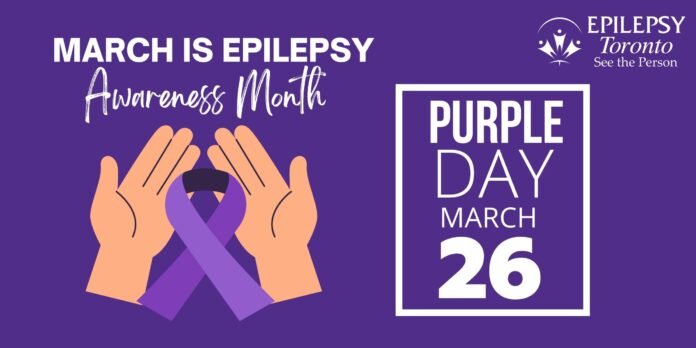
Every year, on March 26th, the world turns a shade of purple in solidarity with the millions of people affected by epilepsy. Purple Day is more than just a date on the calendar—it’s a movement dedicated to raising awareness, dispelling myths, and fostering a global conversation about epilepsy, a condition that remains misunderstood despite its prevalence.
The History of Purple Day
The initiative began in 2008, when a young girl from Canada, Cassidy Megan, decided to take a stand against the stigma surrounding epilepsy. Diagnosed with the condition herself, Cassidy realized how little people understood about epilepsy and the challenges faced by those living with it. She wanted to create a platform where individuals could openly discuss epilepsy without fear or shame.
Inspired by her personal journey, Cassidy teamed up with the Epilepsy Association of Nova Scotia to launch Purple Day. The goal was simple yet powerful: to encourage people to wear purple and spread knowledge about epilepsy. The color purple was chosen because lavender is often associated with solitude and the struggles faced by those living with epilepsy.
Since its inception, Purple Day has gained international recognition. In 2009, the Anita Kaufmann Foundation and the Epilepsy Association of Nova Scotia partnered to take the initiative global. Today, people in over 100 countries participate in events, wear purple, and contribute to making epilepsy awareness a priority.
Understanding Epilepsy
Epilepsy is a neurological disorder characterized by recurrent, unprovoked seizures. It affects people of all ages and backgrounds, with approximately 50 million individuals living with epilepsy worldwide. While some seizures are mild and barely noticeable, others can cause significant physical convulsions and unconsciousness.
There are many causes of epilepsy, including genetics, brain injuries, infections, and developmental disorders. Despite its widespread impact, epilepsy is often shrouded in misconceptions. Many cultures still view it with superstition, leading to discrimination and isolation for those affected. This is why Purple Day plays such a crucial role in educating communities and promoting acceptance.
The Motive Behind Purple Day
The primary objective of Purple Day is to eliminate the stigma surrounding epilepsy and create an inclusive society where individuals with epilepsy feel supported. The movement strives to:
- Raise Awareness: By educating the public about epilepsy, Purple Day aims to reduce misunderstandings and encourage early diagnosis and treatment.
- Support Individuals and Families: Many people with epilepsy struggle with anxiety and self-doubt due to societal attitudes. Purple Day provides a sense of community and belonging.
- Promote Medical Research: Increased awareness leads to better funding and resources for research, ultimately improving treatment options and the quality of life for those with epilepsy.
- Encourage Open Conversations: Talking about epilepsy helps normalize the condition, ensuring that those affected do not feel isolated or ashamed.
How to Participate in Purple Day
Getting involved in Purple Day is easy and impactful. Here are some ways to show support:
- Wear Purple: The simplest way to participate is by wearing purple and encouraging others to do the same.
- Educate Yourself and Others: Read about epilepsy, share information on social media, and discuss it with friends and family.
- Attend or Organize Events: Many organizations host educational seminars, fundraisers, and social events to mark the occasion.
- Support Epilepsy Charities: Donations to epilepsy foundations help fund research, provide support services, and promote advocacy efforts.
Looking Ahead: A Future Without Stigma
While significant progress has been made since Cassidy Megan’s initiative began, there is still much work to be done. Epilepsy awareness needs to move beyond a single day and become a continuous effort to create a world where those living with the condition are treated with respect, empathy, and understanding.
On March 26th, wear your purple with pride. Whether you or someone you know is affected by epilepsy, your support contributes to a brighter, more informed future. Because when we break the silence, we break the stigma.

